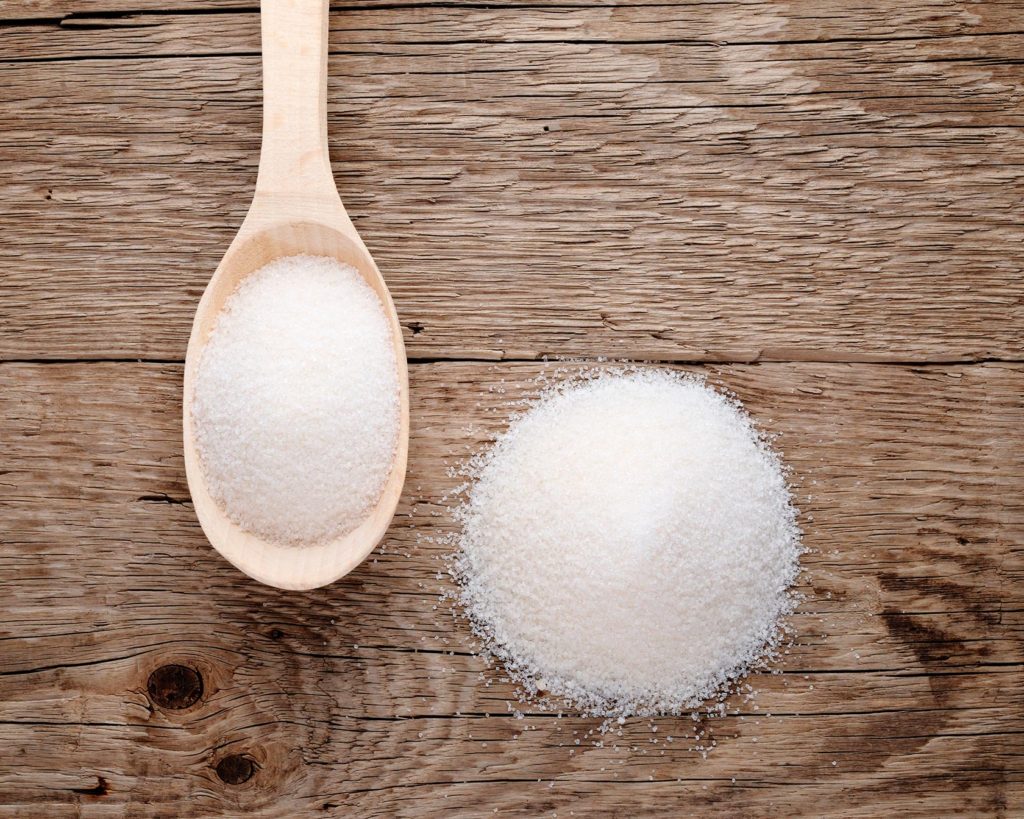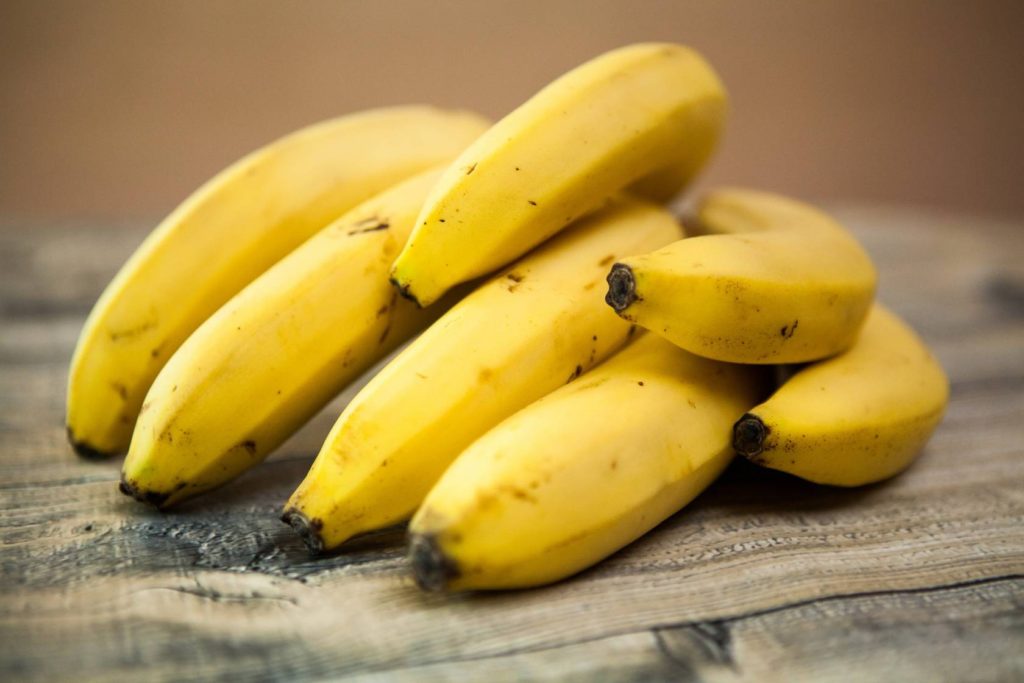Healthy Ingredients
Replacing sugar in baking – a guide
Thinking about replacing sugar with a sweet alternative in the kitchen? You’re not alone.

Table sugar has got a bad rep in recent years, with many of us now looking to ditch the white stuff in favour of a healthier alternative.
The problem with table sugar – or more specifically the free sugars it contains – is that it’s stripped of any nutritional value. It has no fibre, vitamins or minerals, just empty calories that play a role in weight gain and heart disease.
But with so many other sweeteners out there, each claiming to offer different benefits, it can be difficult to find that sweet spot. Here, we take a look at the various options on the market to help you decide which is best for your baking.
While these won’t be straight swaps for table sugar, we’ll explain how, with a little experimentation, you can tweak recipes to suit each.
What are free sugars?
Free sugars are sugars that are added to food and drink, but also include those in honey, syrup and fruit juice.
Free sugars are essentially sugars that don’t come with any additional nutrients (like fibre) as they’re not bound up inside cells of the food.
One simple example to think of is the difference between eating an orange and drinking orange juice. When you eat an orange, you gain fibre from the fruit, along with vitamins and minerals. When oranges are juiced, this frees sugar from the cells of the fruit and takes away the fibre. This leaves behind the free sugars that can damage teeth and contribute to weight gain.
Replacing sugar with honey

Honey is a popular swap for table sugar when it comes to baking or sweetening tea, and is often perceived as a healthier alternative. But is this really the case?
The pros
Honey – specifically raw honey – is thought to have antioxidant properties, helping to mop up any damaging free radicals that are generated in our cells during metabolism. Antioxidant levels vary from honey to honey (depending on the bees’ floral source and location), but typically the darker the honey means a higher value of antioxidants.
Raw honey also contains trace elements of minerals that are important in keeping us well. These are only very small amounts, and would perhaps not have a great deal of effect on your overall health.
Early studies in labs have also suggested that honey can support the growth of probiotics (friendly bacteria), but more research is required to understand if this translates out of the lab and into humans.
The cons
The main concern with honey is that, while natural, it still contains free sugars – the thing we’re trying to avoid.
Honey has a higher fructose content than refined sugar. Fructose can only be processed by the liver, where it’s used to create fat. Having too much fructose in your diet can lead to fatty droplets building up in the liver, causing diseases like nonalcoholic fatty liver disease.
Honey is often marketed as having a lower GI value than refined sugar, meaning it takes longer to raise your blood sugar level. While this may be true, many varieties of honey still have a high GI value and should only be eaten in small quantities.
Replacing honey for sugar in baking
As honey has a higher fructose level than your standard bag of sugar, it often tastes sweeter. With this in mind, you’ll need to use less to achieve the same level of sweetness in your baking.

Honey is a great addition to rich-flavoured bakes, but bear in mind that honey is a liquid so you may need to compensate for the excess liquid elsewhere in your recipe.
The amount of honey you need will depend on your sweet tooth, so play around. As a general rule, try to third the amount (i.e. 10g honey would count for 30g sugar).
Honey also cooks faster than sugar so you may need to adjust the temperature of your oven.
Replacing sugar with agave syrup
Agave syrup – the processed sap from the agave plant – is a popular alternative for table sugar, and, being completely plant based, offers a vegan alternative to honey.
The pros
Agave syrup’s low GI value is its biggest marketing asset. Agave syrup is low in glucose, giving it an average GI value of around 15. This means it takes longer to raise blood sugar levels.
The cons
One of the biggest drawbacks of agave syrup is its high fructose content (which also explains its low GI value). Depending on the variety, agave syrup can be anywhere up to 90% fructose and, as we already know in the case of honey, this heads straight to the liver.
Another drawback is how its processed. While the agave plant may have health benefits, the syrup is heated and treated with enzymes when it’s processed, stripping away any beneficial vitamins and minerals.
Finally, it’s important to bear in mind that, like for like, agave syrup is sweeter and contains more calories than sugar, so you’ll need less of it in your recipe.
How to bake with agave syrup
Agave syrup is a popular alternative for adding a sweeter taste to drinks and small bakes like muffins and flapjacks.
Being sweeter than sugar, you’ll need to use less than half of your sugar measurement in your recipe. You may also need to turn your oven down by about 10°C to stop any spoiling.
Replacing sugar with maple syrup
Maple syrup is made from the sap of sugar maple trees. Just like agave, this syrupy sweetener is a vegan alternative to honey. But is what’s inside really any better for you than table sugar?

Pros
One thing that sets maple apart from other sugar syrups like agave and honey is that it contains a slightly higher mineral content.
A typical bottle of maple syrup contains calcium, potassium, iron, zinc and manganese, which all contribute to our wellbeing.
Cons
There’s just no getting away from it – at the end of the day, like honey and agave, maple syrup is packed with free sugars.
With a GI value of around 54, it’s not too dissimilar to cane sugar (which has a value of around 65). Our advice? Enjoy in moderation.
Using maple syrup in baking
Maple syrup is only a touch sweeter than sugar, so it’s best used in bakes that don’t need to be overly sweet, like biscuits.
As it’s a liquid, you may need to add a little more flour to your recipe to compensate for the additional fluid that the maple syrup will bring.
Replacing sugar with artificial sweeteners
Artificial sweeteners – such as aspartame, saccharin and sucralose – might be the first thing you reach for when cutting back on the sugar. Their low-calorie, super-sweet appeal makes them an attractive alternative when you’re cutting back on the sugary stuff, but is it all too good to be true?
Pros
The obvious pros of artificial sweeteners are that they can often be several hundred times sweeter than sugar and contain very little – if none at all – of the calories.
Containing very little nutritional content means that they also have a very low GI score – with the majority of artificial sweeteners registering close to zero. With this in mind, they’re often looked favourably upon by people looking to keep blood sugar levels stable.
Cons
There has been controversy surrounding the long-term effects of sweeteners. Various studies have started to investigate if artificial sweeteners negatively effect the bacteria in the gut. A 2019 review noted that saccharin and sucralose have been found to shift populations of gut microbiota, while stevia extracts may also affect the gut microbiota composition. While interesting to note, much more research is needed to truly understand the effect these sweeteners might be having on our bodies.
This controversy hasn’t gone unnoticed and one sweetening company doing their bit for creating gut-friendly sweetener is Tate and Lyle. The company has developed a sweetener called SPLENDA® Sucralose that remains stable in a range of conditions, including in the presence of live cultures.
Baking with artificial sweeteners – which is best?
You need to take care which sweetener you choose when it comes to replacing sugar in your favourite sweet treats.
Stevia-based sweeteners are heat stable and can be used in baking, but it’s important to bear in mind that these sweeteners don’t caramelize like normal sugar, so your bakes won’t appear golden.
Splenda can be used for baking, but similar to Stevia-based sweeteners, won’t have the same browning affect on your bakes. Spritzing with a little oil before bakes go in the oven can help.
You might also notice that, while sweet, bakes made with Splenda may not rise in quite the same way so you may want to experiment with the addition of ½ teaspoon of baking soda for every cup of Splenda you use.
Some sweeteners – like aspartame – are just no good for baking. Aspartame can lose sweetness in heat, so may be better suited to the addition of chilled (uncooked) puddings, or custard. Others, like saccharin, can leave a bitter aftertaste and may result in an altered texture.
Replacing sugar with fruit

When it comes to replacing sugar, good old-fashioned fruit and vegetables can make a great alternative. While fruit and vegetables also contain sugars, these aren’t considered free as they’re bound up within the cells of the plant and bring with them fibre, vitamins and nutrients.
Pros
The vitamins and nutrients that fruits and vegetables contain are all essential ingredients for maintaining our health and wellbeing.
Fibre is an important part of our diet and is associated with a lower risk of heart disease, stroke, type 2 diabetes and bowel cancer. It’s also really good for our gut, with some dietary fibres found in fruit and vegetables having a rich source of prebiotics to fuel our gut-friendly bacteria.
Cons
It seems there’s no getting away from sugar, and while the sugars in fruits are naturally occurring, they can still cause an increase in blood sugar levels. This is especially true for dried fruits, where the sugar is much more concentrated and may cause a spike in blood sugar levels.
Our advice is to enjoy a range of vegetables and fruits – variety is the spice of life!
Baking with fruit and vegetables

When it comes to baking, a general rule of thumb is to leave fruits and vegetables until they’re overripe to make the most out of their natural sweetness.
Grated vegetables are a great way to add sweetness and moisture to your cakes. Carrot cake and courgette cake are easy wins when it comes to baking yourself a sweet treat.
You may need to play around initially to get the right level of sweetness in your bakes – dried fruits are much more concentrated in sweetness. Figs and prunes are often popular additions to bakes and are also packed with nutrients like iron and potassium. Figs add richness while prunes are great for providing moisture.
One of the most popular ways of baking with dried fruit is to make a puree. Many people find success in replacing sugar on a one-to-one ratio with date or fig puree, but be aware you’ll need to compensate for the additional moisture elsewhere in your recipe.
Also, it’s important to remember to choose your dried fruit carefully. Certain dried fruits, such as raisins, contain high amounts of sugars and can be quite calorific too.





